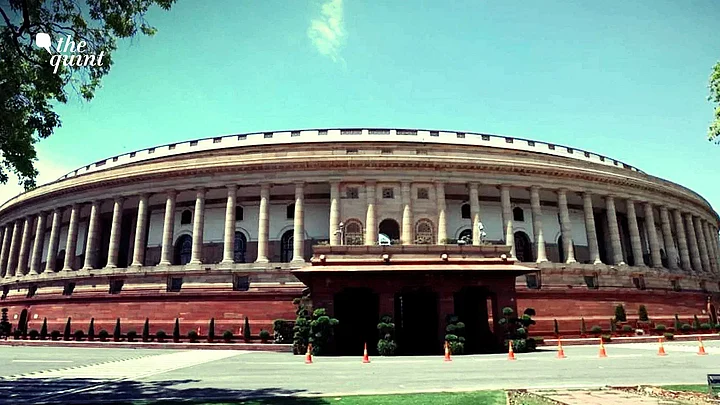The biennial Rajya Sabha elections to decide the fate of 57 Rajya Sabha seats from 15 states are scheduled to take place on 10 June.
While 41 of these seats have already been filled by unopposed candidates, political tensions remain high ahead of voting for the remaining members, with some parties having moved their MLAs to resorts to ward off horse-trading.
How many members are there in the Rajya Sabha?
The Constitution permits a maximum of 250 members in the Upper House, out of which 238 are elected.
In addition to elected members, there are 12 members nominated by the President of India from amongst persons having special knowledge or practical experience in literature, science, art, and social service.
Who is eligible to stand for the Rajya Sabha elections?
In order to be eligible for Rajya Sabha elections, the candidate "should be a citizen of India above 30 years of age and possessing such other qualifications as may be prescribed by law of Parliament," as per the website of the Upper House.
The member does not need to be a domicile of the state from which he stands to be elected to the Rajya Sabha. They can be an elector in a parliamentary constituency anywhere in India.
Who can vote in the Rajya Sabha elections?
Only the members of the Assemblies of states and Union territories can vote for the election of persons to the Rajya Sabha.
How are the elections conducted?
Rajya Sabha members are elected by MLAs through an indirect election. Voting is conducted in accordance with the system of proportional representation by means of the single transferable vote.
This principle is employed in order to prevent the monopoly of parties with more MLAs. Each MLA’s vote is counted only once, but each MLA doesn’t vote for every single seat. Under this process, members have to list 10 candidates in the order of preference.
Candidates are elected when 10 or more members list them as their first choice. As and when candidates are elected, the surplus votes are transferred to the next candidates. This allows MLAs to vote for candidates from other parties.
How are the votes counted?
To be declared a winner, a candidate must secure a minimum quota of votes, which is determined by a formula:
(Total votes polled/Total number of candidates to be elected + 1) + 1
When the votes are counted, it is done on the basis of first preference votes secured by each candidate. If after the counting of all first preference votes, required number of candidates fail to fulfil the quota, the candidate who secured the lowest votes of first preference is eliminated and their votes are transferred to those who are mentioned as second preference on those ballot papers. This process continues till the required number of candidates are declared elected.
How many seats are at stake this time?
Elections for 57 Rajya Sabha seats from 15 states will be conducted in June 2022.
The election will be contested on 11 seats from Uttar Pradesh, seven seats from Maharashtra, six in Tamil Nadu, five seats from Bihar, four seats from Rajasthan, Karnataka and Andhra Pradesh, three seats in Madhya Pradesh and Odisha, two in Punjab, Haryana, Chhattisgarh, Jharkhand and Telangana, and a single seat in Uttarakhand.
How were some members elected before the date of the elections?
While elections to the Rajya Sabha are scheduled to take place on 10 June, a number of candidates were elected to the Upper House of Parliament unopposed on Friday, 3 June, which was the last day for the withdrawal of nominations.
Forty-one candidates from 11 states did not face any opposition and were thus elected before the date of the election.
Why do these elections matter?
The upcoming Rajya Sabha elections will see a change in the proportion of the members of various parties in the House.
Out of the 57 retiring members, 24 are from the Bharatiya Janata Party (BJP). The party has already won 14 seats, and can win six of the 16 seats to decided by voting.
The Congress has 29 members. Seven of its members are retiring and four of its candidates have been elected unopposed. After voting, the party's strength can rise to 30-32.
The biggest gainer will be the Aam Aadmi Party, whose strength has gone up from three to 10 because of its huge victory in the Punjab Assembly elections in March.
What is the controversy surrounding Rajya Sabha elections this time?
A number of parties have moved its legislators to resorts in an attempt to ward off poaching till the polls for the Upper House of Parliament.
The BJP has shifted more than 60 of its MLAs in Rajasthan to Devi Niketan, a resort in Jamdoli on the outskirts of Jaipur, while the Congress moved its MLAs in the state to the Taj Aravali resort in Udaipur.
The Shiv Sena also moved its MLAs to South Mumbai's five-star Trident Hotel, on Tuesday.
